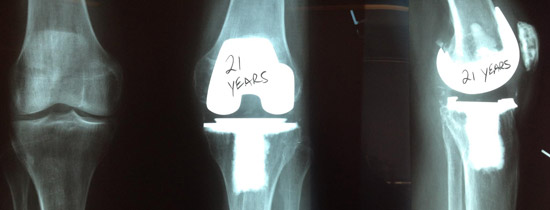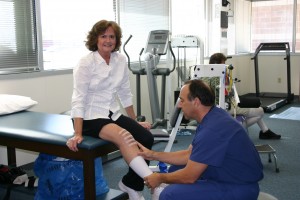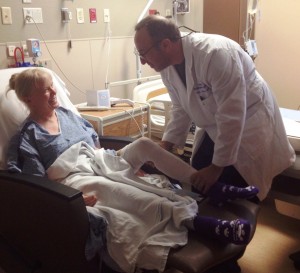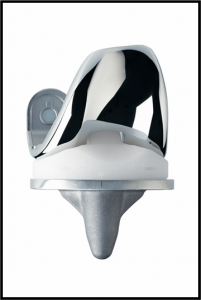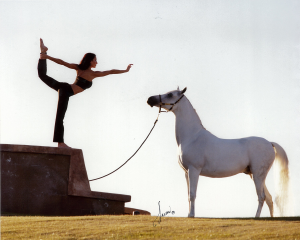Total Knee Rehab is important!
Unlike Hip Replacement surgery, where patients usually recover without formal physical therapy – Total Knee Replacements almost always need total knee rehab from a physical therapist. A typical patient would see a therapist post-op 2 to 3 times a week for 4 to 8 weeks, with an average around 6 weeks. Patients who recover faster will often start with the physical therapist and then “graduate” to a home program or self regulated gym exercise as soon as 3 weeks after surgery.
If there were no therapists available, or it was too expensive, I would recommend some simple home activities to get you where you need to be. My favorite is the stationary bicycle…as soon as you can get the knee flexed past 90 degrees, the bike is a sure fire way to get your maximum motin back over time. Raise the seat gradually, as this forces you to get more extension (straightening) in the knee.
In actual fact, It is easier to get the flexion back on your own then it is to get the last 5 degrees of extension. This is because we stretch the posterior tissues to keep the knee stable during insertion of the knee, and it will take time until that stretching does not cause some pain. Patients with lower pain tolerance sometimes have a very difficult time getting the last 5 degrees of full extension. The extension will return over time as the knee naturally “stretches out” a bit with increased activities. It is normal when doing a posterior cruciate substituting (PS) total knee to make the knee gaps snug, so that over time the knee ligaments do not stretch out “too much”. This could lead to a feeling of looseness or increased instability with flexion activities. It is much better to have a knee that is slightly tighter and more stable, than one that feels loose. Rarely does a patient have a problem with a knee that is “too tight” after a year of use and natural stretching over time.
We will direct you to the best therapist in your area. It is OK to do your rehab close to home, as the protocols for Total Knee rehab are fairly standardized. Anytime a question arises about the rehab, you should call the office and speak to Dr. Kozinn or Gerry to get an answer. About one in 20 total knees remains stiff at 2- 3 months after the surgery. Often that knee will have a manipulation under anesthesia. This is a simple procedure done under an anesthetic to bend your knee without pain. We put you to sleep for a minute and gently force the knee to bend. It is not clear why some people put down more scar tissue after surgery, put when it happens we can help by manipulating the knee tearing any scar tissue adhesions that may have formed.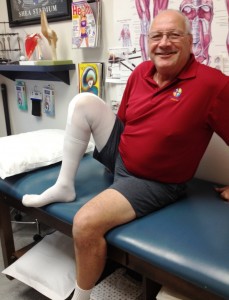
Muscle strengthening is the final phase of Total Knee rehab and can last for up to a year. We (Dr. K and the physical therapist) will reccomend the best exercises for you to do over the long term. In general it is better to avoid deep knee squats, particularly with heavy weights as it can damage or loosen the patella (kneecap) button. Most patients get back to normal activities. We like to limit jumping sports for obvious reasons.




